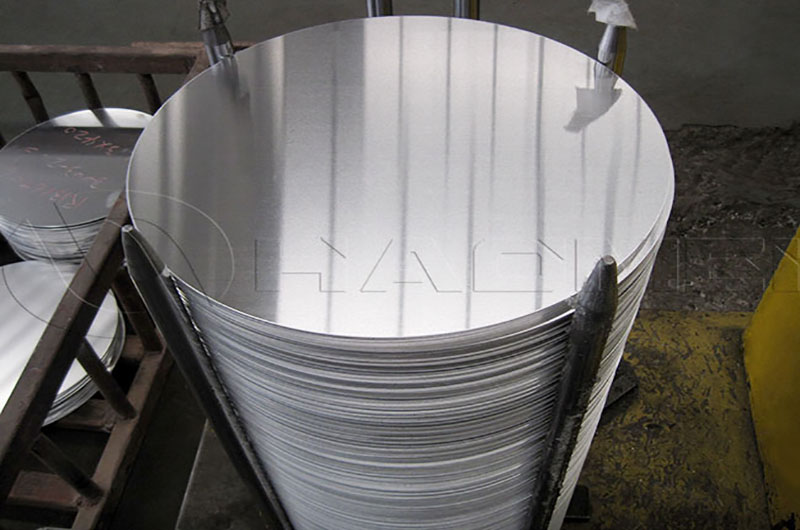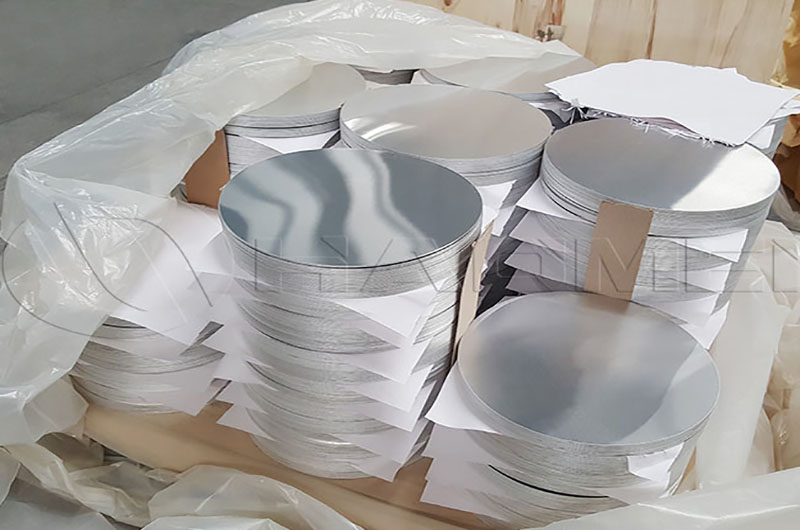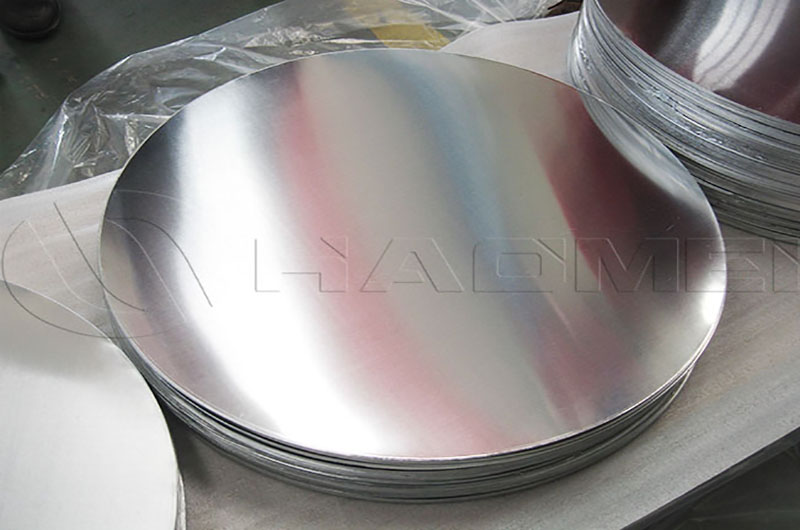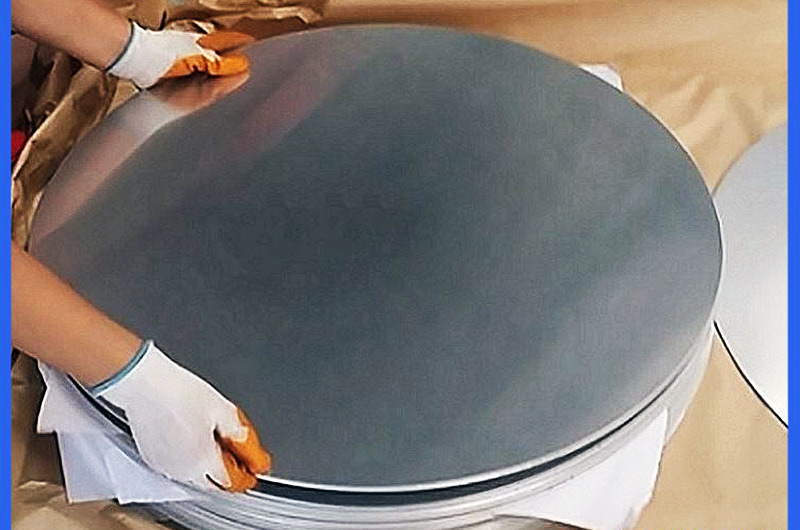- Aluminum material selection
- Casting
- Hot rolling
- Cold rolling
- Pickling
- Cutting and Trimming
- Inspection and packaging
The production of aluminum discs usually includes the following main steps:
Aluminum material selection
Choose aluminum alloy of appropriate quality as raw material. Aluminum alloys typically contain aluminum along with other alloying elements to provide required strength and other properties.
When choosing aluminum materials, you usually need to consider the following aspects:
- Application requirements: Determine the use environment and application requirements of aluminum. Different applications require aluminum alloys with different properties such as strength, corrosion resistance, and electrical conductivity.
- Mechanical properties: Select the appropriate aluminum alloy according to the mechanical property requirements of the product, including strength, toughness, hardness, etc. Common aluminum alloy series include 1000, 2000, 3000, 5000, 6000, 7000 and 8000 series.
- Corrosion resistance: If the product will be used in a corrosive environment, it is necessary to choose an aluminum alloy with good corrosion resistance, such as 5000 and 6000 series.
- Thermal conductivity: For applications that require good thermal conductivity, such as radiators, choose aluminum alloys with better thermal conductivity, such as the 6000 series.
- Weldability: If the product requires welding, choose aluminum alloys with good weldability, such as 6000 and 7000 series.
- Cost Considerations: Choose the right aluminum alloy based on budget and cost considerations. The production costs and market prices of different aluminum alloys may vary.
- Processing performance: Consider the processing performance of aluminum to ensure that it can meet the requirements of production processes, such as casting, hot rolling, cold rolling, etc.
- Lightweight: Aluminum is a lightweight metal and is often an ideal choice for products that require lightweight construction.
In actual selection, it is usually necessary to weigh and consider the above factors according to the specific product design and use environment to ensure that the selected aluminum material can meet the performance and quality requirements of the product.
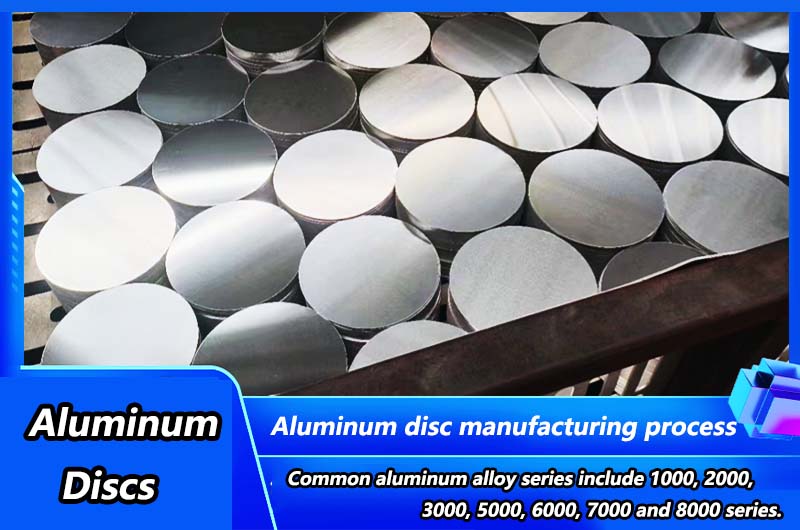
Casting
Aluminum discs can be manufactured by different casting methods, the most common of which are continuous casting and ingot casting.
In continuous casting, molten aluminum alloy flows through a metal mold to form a continuous billet with a circular cross-section.
In ingot casting, molten aluminum alloy is cast into an ingot and then formed into discs through heat treatment and other process steps.
The choice between continuous casting or ingot casting depends on specific product requirements, cost considerations, production efficiency and other factors. Here are some considerations that influence your choice:
1. Cost and efficiency
Continuous casting: Continuous casting usually has high production efficiency, is suitable for mass production, and can realize continuous and automated production processes. However, its equipment and operating costs can be higher.
Ingot casting: Ingot casting equipment is relatively simple, suitable for small batch production or customized production, and the cost is low. But its production speed is relatively slow.
2. Product size and shape
Continuous casting: Suitable for producing larger diameter aluminum discs and able to provide longer product lengths. Suitable for products requiring long dimensions.
Ingot casting: It is more suitable for producing aluminum discs with smaller diameters and can also meet the needs of more shapes because it can be achieved through different casting molds.
3. Material properties and structural control
Continuous Casting: Continuous casting provides a more uniform microstructure and structure because the aluminum undergoes a similar cooling process throughout the continuous process, helping to control grain size and distribution.
Ingot casting: Ingot casting may lead to uneven structure, requiring subsequent heat treatment and other process steps to adjust material properties.
4. Production scale
Continuous casting: Suitable for large-scale production and able to meet the needs of large-volume orders.
Ingot casting: more suitable for small-scale production, or situations where product scale changes are more flexible.
5. Customer requirements
Continuous Casting: Some customers may prefer continuously cast products as it generally provides greater quality consistency.
Ingot Casting: May be more suitable for customers requiring specific shapes, small batches, or individual requirements.
In practical applications, manufacturers need to comprehensively consider the above factors and select an appropriate casting method based on the specific requirements of the product and market demand. Sometimes the two methods can be combined and adjusted flexibly according to production needs.
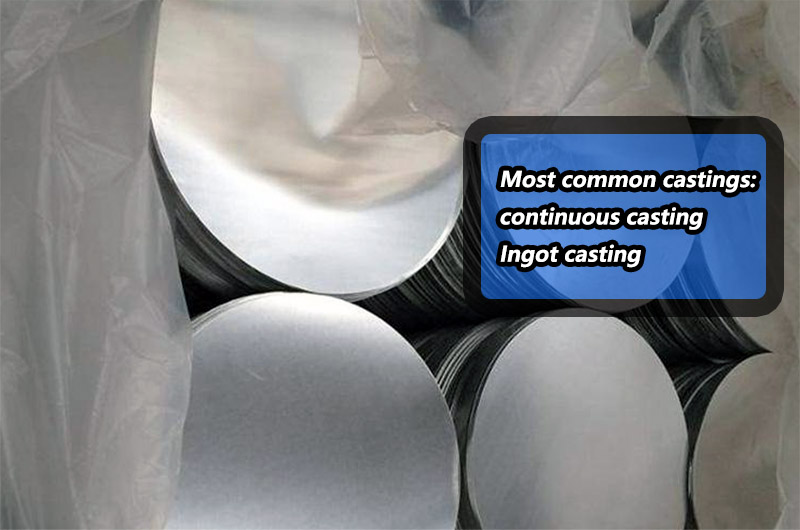
Hot rolling
The billet is put through a hot rolling process, where it is plastically deformed through a rolling mill at high temperatures to form aluminum discs of the required diameter and thickness. This helps improve the density and mechanical properties of the material.
Cold rolling
Some production processes may require a cold rolling step to further control the size and surface quality of the wafers. Cold rolling can be achieved with a cold rolling mill, which lowers the temperature of the material and improves the surface finish.
Cold rolling is usually used in the production of aluminum discs to improve the dimensional accuracy, surface quality and mechanical properties of the product. The following are some situations where a cold rolling step may be required:
- 1. High dimensional accuracy requirements: If the product has high dimensional accuracy requirements, cold rolling can be used to adjust the diameter and thickness to ensure that the product meets the specified dimensional standards.
- 2. High surface quality requirements: Cold rolling helps to improve the surface finish of aluminum discs and reduce surface defects, making it more suitable for applications with high appearance requirements, such as construction, decoration and other fields.
- 3. Adjustment of mechanical properties: Cold rolling can improve the hardness and strength of the material and adjust the grain structure, thereby improving the mechanical properties of the product. This is very important for some applications that require high strength.
- 4. Shape adjustment: Cold rolling can adjust the shape of the aluminum disc to ensure that the product meets the design requirements while providing better processing performance.
- 5. Removal of residual stress: Cold rolling can reduce or eliminate the residual stress that may have been generated in the material in the previous process, improving the stability and reliability of the product.
- 6. Improve surface hardness: Cold rolling can increase the surface hardness of aluminum discs and improve their wear resistance and corrosion resistance.
- It should be noted that cold rolling is not a necessary step in the production process of all aluminum discs, but is determined according to the requirements and application fields of specific products.
Some products may be able to meet the requirements directly after hot rolling, but for some products that require higher surface finish, dimensional accuracy, and mechanical properties, cold rolling is even more necessary. Manufacturers usually decide whether to use cold rolling based on customer demand and product specifications.
Pickling
Aluminum discs may need to go through a pickling process to remove oxides and impurities on the surface and improve surface quality.
Cutting and Trimming
The aluminum discs are cut to the appropriate size according to the customer's requirements and trimmed to ensure they meet quality standards.
Inspection and packaging
Conduct quality inspections to ensure that aluminum discs meet specified technical requirements. Afterwards, the product is packaged and ready for shipment.
It should be noted that the sequence of the above steps and specific process parameters may vary depending on the manufacturer and product requirements. The process for producing aluminum wafers will vary depending on material properties, cost considerations and end product use.
Aluminum round sheets are usually cut directly from aluminum coils or sheets, and currently more than 80% of aluminum round billets are produced in China.
For round aluminum with a diameter of less than 800mm, the discs are generally produced using a fully automatic disc placing machine.
Aluminum discs with a diameter of more than 800mm are widely used in highway signs, and they are always produced with shearing machines.
Informations you may be interested in:
- Hydrophilic aluminum foil vs non-hydrophilic aluminum foil
- Solutions to hydrophilic aluminum foil problems
- What is Hydrophilic Aluminum Foil?
- Hydrophilic aluminum foil performance indicators
- What components in air conditioning systems use aluminum foil?
- How is aluminum foil used for thermal insulation in air conditioning systems?
- Can aluminum foil be used in outdoor air conditioning units?
- Comprehensive analysis of air conditioning aluminum foil: classification and applications
- What kind of material is air conditioning aluminum foil made of and what are its
- 1050 Versatility in Air Conditioner Aluminum Foil Applications

